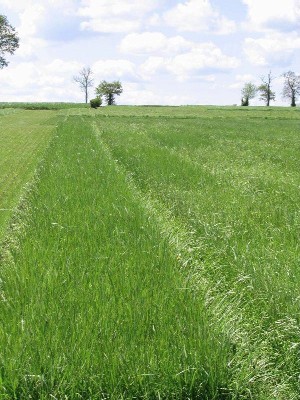 Microbial Indicators
Microbial Indicators
Soil quality can influence land-use, productivity and long term sustainability. Soil microbial communities and their activities are integral part of soil functioning. We have developed and applied approach to utilise microbial community and diversity as an effective tool in assessment of soil health. A range of physiological, biochemical and molecular techniques to characterise microbial diversity are used for this purpose.
We have developed new molecular approaches which can simultaneously characterise up to four different taxa (e.g. bacteria, fungi, archaea and rhizobia for soil, and bacteria, cyanobacteria and algae for water). Microbial data generated from these approaches are combined with chemical, physical and other biological properties to develop a risk-based analysis of environmental quality.
Projects
- 2006-2011. Use of soil microbial community as an indicator of soil health (Work package 3.2. Soil Health Indicator). Funding Agencies: SEERAD, UK. Joint PI. Total Value of the project:
- 2006-2011. Impact of soil management practices on soil microbial community and processes (Work Package 3.3: Management of soil). Funding Agencies: SEERAD, UK. Joint PI. Total value:
- 2006-2008. Use of microbial community structure as an indicator of water quality (Work package 3.4 (Water health indicator). Funding Agencies: SEERAD, UK. Joint PI.
- 2005-2008. Soil quality indicators- developing biological indicators (SQID II). Funding Agencies: DEFRA scheme phase II, UK in collaboration with CEH and Cranfield University. CoI.
Collaborators:
- Prof Karl Ritz, Prof Jim Harris (Cranfield University),
- Dr Clare Wood (CEH, Lancaster),
- Dr. Bryan Griffith (SCRI),
- Staff at Macaulay Institute.
- Informal collaboration with Dr. Jackie Aisalbae (Landcare research, Hamilton, NZ) and
- Mr Tony Pattison (Primary Research Ltd, Queensland, Australia).
Group members:
- Dr. Brajesh K Singh
- Nadine Thomas (Research Staff)
- Lucinda Robinson (Research Staff)
Selected Publications:
- Singh, B.K., Dawson, L., Macdonald, C. and Grime, S. (2008). Impact of biotic and abiotic interaction on soil microbial communities and functions: A field study. Applied Soil Ecology, In press.
- Macdonald, C., Campbell, C, Bacon J and Singh, B.K. (2008). Multiple profiling of soil microbial communities identifies potential genetic markers of metal-enriched sewage sludge. FEMS Microbiology Ecology, 65: 555-564.
- Macdonald, C., Singh, B.K., Campbell, C., Horsewell, J. and Spier, T., (2007) Long-term exposure to Zn-spiked sewage sludge alters soil community structure. Soil Biology & Biochemistry. 39: 25-76-2539.
- Singh, B.K., Munro, S., Potts, J and Millard (2007)Influence of grass species and soil type on rhizosphere microbial community structure in grassland soils. Applied Soil Ecology. 36: 147-155. Tate, K. D.J. Ross, S. Saggar, C.B. Hedley, J. Dando, B.K. Singh and S.M. Lambie (2007). Methane uptake in soils from Pinus radiata plantations, a reverting shrubland and adjacent pastures: Effects of land-use change, and soil texture, water and mineral nitrogen. Soil Biology and Biochemistry. 39:1437-1449.
- Singh, B.K. and Thomas, N. (2006). Multiplex-Terminal Restriction Fragment Length Polymorphism. Nature Protocol. 1, 2428-2433.
- Singh, B.K., Nazaries, L., Munro, S., Anderson, I. and Campbell, C. (2006). Use of multiplex terminal restriction fragment length polymorphism for rapid and simultaneous analysis of different components of the soil microbial community. Applied and Environmental Microbiology 72, 7278-7285.
- Nunan, N., Singh, B.K., Reid, E., Ord, B., Papert, A., Squire, J., Prosser, J., Wheatley, R., McNicol, J., and Milard, P. (2006). Sheep-urine-induced changes in soil microbial community structure. FEMS Microbiology Ecology. 56, 310-320.
- Singh, B.K., Reid, E., Ord, B., Potts, J., and Milard, P. (2006). Investigating microbial community structure in soils by physiological, biochemical and molecular fingerprinting methods. European Journal of Soil Sciences. 57, 72-82.
- Nunan, N., Daniel, T.J., Singh, B.K., Papert, A., McNicol, J. and Prosser, J.I., (2005) Links between plant and rhizoplane bacterial communities in grassland soils, characterized using molecular techniques., Applied and Environmental Microbiology, 71, 6784-6792.
- Singh B. K. (2005). Microbial diversity: progress and important knowledge gaps. American Society of Microbiology News, 71, 210-211.
|
Updated: 23 Jan 2024, Content by: BS
|

